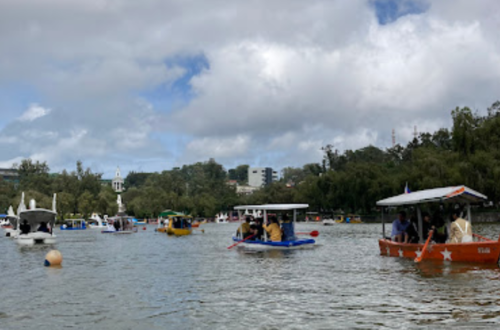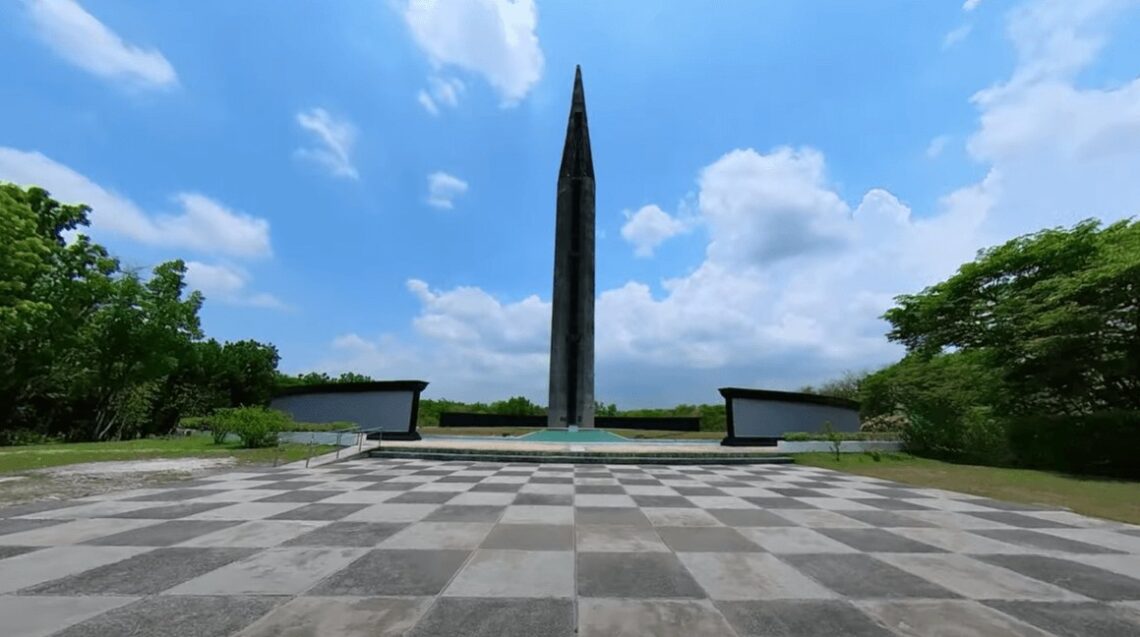
Capas National Shrine
Introduction
Capas National Shrine is a popular historical memorial located in the province of Tarlac and is dedicated to Filipino and American soldiers and prisoners of war who died during the Bataan Death March. This memorial is in honor of all the brave men and women who defied the might of the invaders at Bataan, Corregidor, and other parts of the Philippines during the Second World War. Thousands died in battle during the Death March and while in captivity, thousands more endured inhuman conditions at the prison camp in Capas Tarlac. They suffered in the night so that their countrymen would wake to the dawn of freedom. The estimated death marchers on April 9-15, 1942 are 60,600 Filipinos and 9,900 Americans. On the other hand, the estimated defenders who reached Capas Tarlac are 45,692 Filipinos and 9,300 Americans.
According to its history, Capas National Shrine was established as Camp O’Donnell in the year 1940 as a cantonment center for the military training of Filipino youth. On July 15, 1941, it became a mobilization center of the 71st Division, PA, USAFFE as ordered by US President Franklin Roosevelt. Afterward, it was transformed into a Prisoner of War camp by the Japanese Imperial forces after the “Fall of Bataan” and the surrender of the Filipino and American troops during World War 2. Then it was renamed as Capas Prisoners of War Concentration Camp. Around 60,500 Filipino and American prisoners of war were herded into this camp and later many became weak, and sick and eventually passed away.
On July 25, 1942, approximately 30,000 Filipinos and American prisoners died of sickness and malnutrition while under detention. Then after World War 2, it became part of Clark Air Base Military Reservation. Fast forward, it was turned over to the Philippine government on the 40th Anniversary of Bataan Day on April 9, 1982. Then it was declared as Capas National Shrine by virtue of Proclamation No. 842 dated December 7, 1991, by President Corazon Aquino. After a few years, President Fidel V. Ramos and the Department of National Defense envisioned the redevelopment of the Capas National Shrine to show our genuine reverence to the World War 2 soldiers who were part of the Death March. The redevelopment of the shrine will set new standards for public awareness and education, tourism, and socio-economic development for the local community and the province of Tarlac. The proposed redevelopment of the shrine was immediately given support by Congress and Malacañang with the approval of Republic Act No. 8221 on October 9, 1996.
Then on April 9, 2003, the Philippines government unveiled the 73-meter-high Obelisk which is a symbol for lasting peace. It is surrounded by a black marble wall engraved with the names of the Filipinos and Americans known to have died during the Second World War. Presently, Capas National Shrine has a total size of 54 hectares. The 35 hectares that have been planted with 31,000 trees of various species such as mahogany, duhat, alibangbang, and mango represent each of the soldiers who died during the Death March or the concentration camp. Also, the planting of trees promotes environmental consciousness among the people in the province. The reforestation of the 35 hectares of parkland is a joint project of the Military Shrines Service, PVAO (Philippine Veterans Affairs Office), DND (Department of National Defense), and DENR-PENRO (Department of Environment and Natural Resources – Provincial Environment and Natural Resources Office). The main attraction in the shrine is the Obelisk Tower. A regulatory signal beacon was installed atop the obelisk to symbolize the height of the nationalistic aspiration of Filipinos toward peace and freedom. Observance and commemoration are held annually on this shrine on The Day of Valor on April 9.
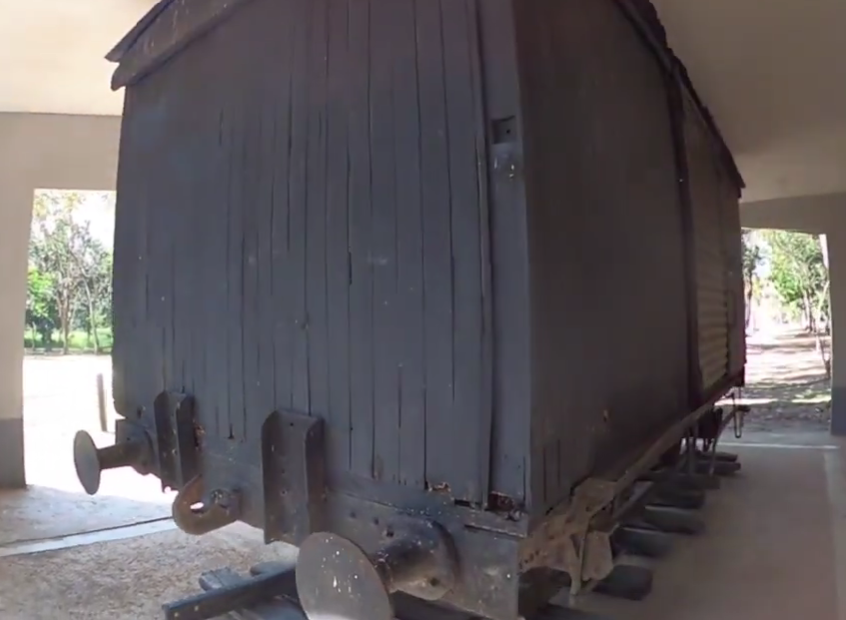
Another attraction in the Capas National Shrine is the Bataan Death March Boxcar. After the Death March which claimed many lives, Filipino and American prisoners of war having walked 105 kilometers from Mariveles and Bagac, Bataan under the intense April heat were assembled in San Fernando Pampanga and were loaded into boxcars. This boxcar and many like it were used to transport Filipino and American prisoners of war, the defenders of Bataan and Corregidor from San Fernando Pampanga to prison camps in Capas Tarlac after the long march. It was one of the many freight cars of the Manila Railroad Company before World War 2. Measuring about six feet long, eight feet wide, and six feet high, this boxcar had wooden walls and a metal roof. A larger version made of steel was 33 feet long, seven feet high, and eight feet wide.
At San Fernando Pampanga the prisoners were loaded into the boxcars by the Japanese guards who used their rifle butts and bayonets to squeeze more people than the capacity of the boxcars. Fifty to sixty men were forced into this particular type of car. As many as one hundred fifty to one hundred sixty men were crammed into the larger version of this boxcar. The boxcars were so tightly packed that it became impossible to sit down. The only source of ventilation and air was a tiny slit in the door of each boxcar. The boxcar under the sweltering sun rapidly became an oven and men suffocated in the heat. Those afflicted with dysentery could not control their defecation and soon the floor of the car was filthy with excrement, urine, and vomit. Many died where they stood in the boxcars. This boxcar is the last known surviving freight car of its kind and is a mute witness to the human sacrifice and heroism of all those who were victims of the Bataan Death March. It serves as a memorial to the horrors of war and to man’s inhumanity to his fellow man.
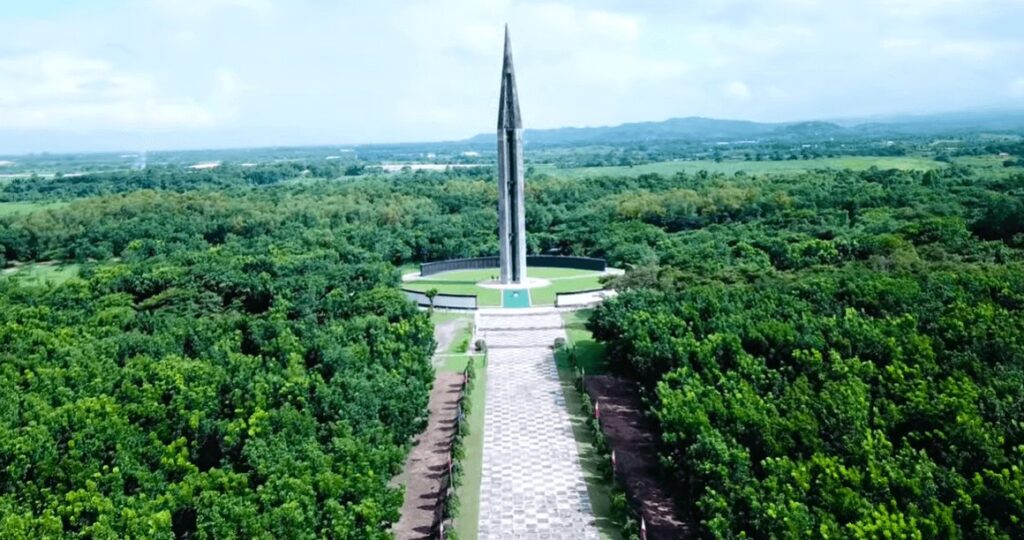
Name: Capas National Shrine
Location: Capas, Tarlac, Philippines
Features: Wall of Heroes Memorial and 70-meter-high Obelisk tower
My trip to Capas National Shrine
It was Sunday when I decided to have a side trip to the historical Capas National Shrine after I explored some of the famous places in Tarlac during the long weekend. At the entrance of the shrine, I notice that the place is so beautiful because of the greenery everywhere I look around. As I move forward, I can see from a distance the lofty needle-like tower and the wide central walkway that is flanked on both sides by mini-flagpoles to accentuate the approach to the needle-like tower or Obelisk.
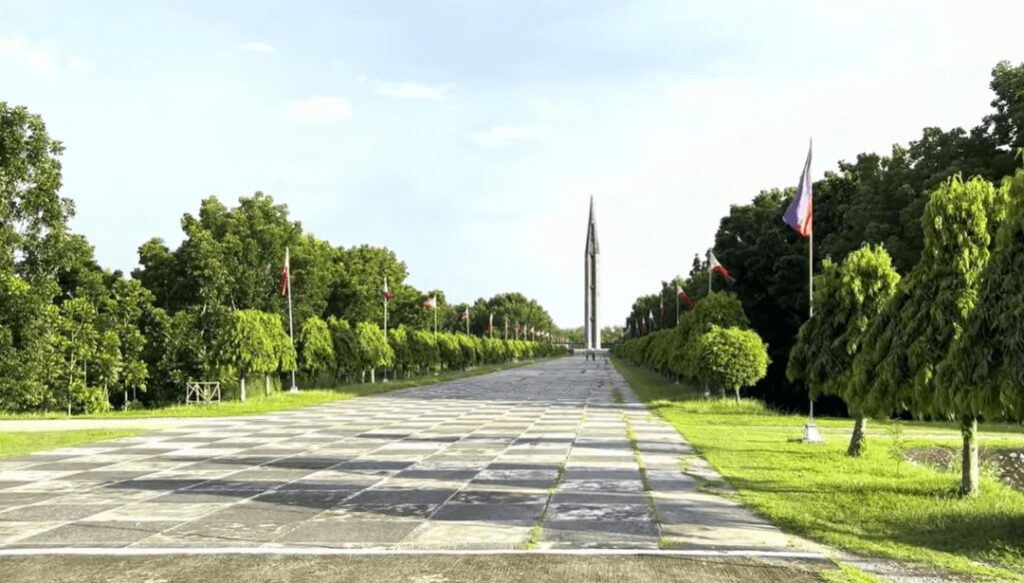
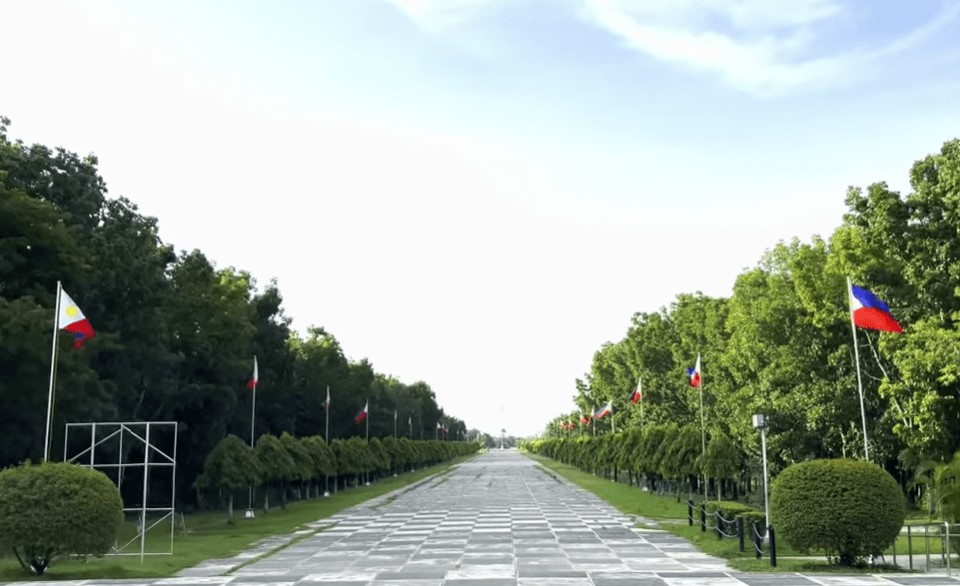
After a few minutes, I reached the memorial plaza and I found that it was a perfect solemn gathering place to remember and honor the war heroes. The large space allows the people to view the magnificence of the peace monument (Obelisk) and the scale and proportion of the site create a monumental effect to excite the spectator’s imagination.
Then as I roam around I can see the marker on the semicircular black granite wall that reads “Tired, hungry defenders like heroes old, held their ground brave and true to the last man. The smoke of battle cleared. A crimson flood lay like a carpet on the hallowed ground. O heroes, you died not in vain. New blood picked up your cry in one united sound until victory the fight must go on. Each Filipino heart, A Bataan!”. On the other side, I can see statistics about the total number of prisoners and deaths, together with poems for peace. Then I found out that the Wall of Heroes Memorial was a tribute to the Filipino heroes of World War 2 and was inaugurated by President Gloria Macapagal-Arroyo on April 9, 2003, in the presence of US Ambassador Francis Ricciardone and Japanese Ambassador Kojiro Takano. The construction of this wall was initiated by the Department of National Defense under the leadership of Secretary Angelo Reyes in line with its mandate to promote the legacy and welfare of Philippine war veterans.
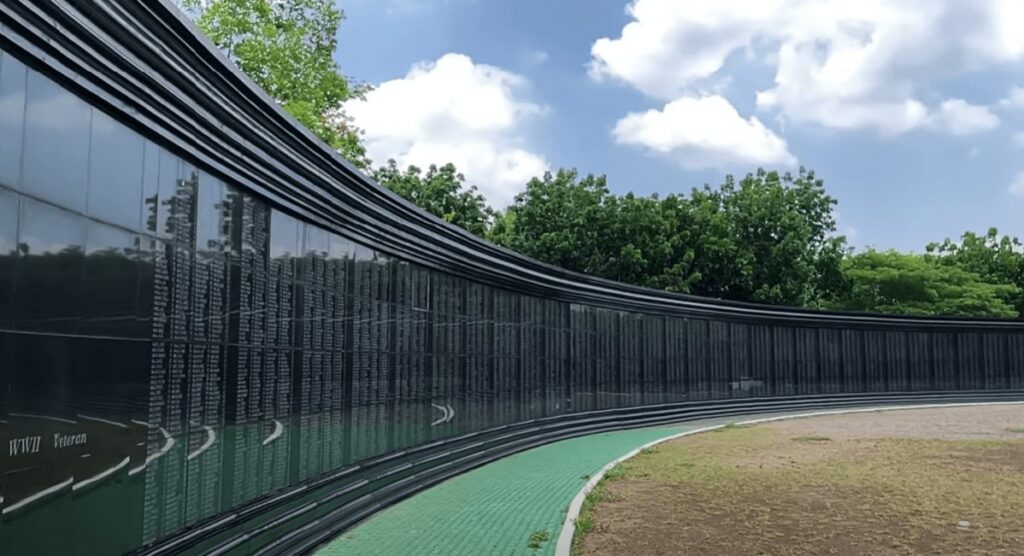
A few seconds later, I can see the engraved list of names arranged alphabetically of identified Filipino and American soldiers who died during the Death March. The Wall of Heroes memorial was conceived by the March of Heroes Task Force led by Defense Undersecretary Edgardo Batenga. It was built by the 51st Engineering Brigade Philippine Army under the command of BGen Francisco Bravo AFP in coordination with the Military Shrines Services headed by Ms. Teresita Cuevas. History Professor Ricardo Jose in cooperation with the Defenders of Bataan and Corregidor and the Veterans Federation of the Philippines, validated the authenticity of the lists from which the names on this wall were culled. Creative supervision of the project was provided by Infinit-1 Communication Services led by Ms. Sony Jalandoni.
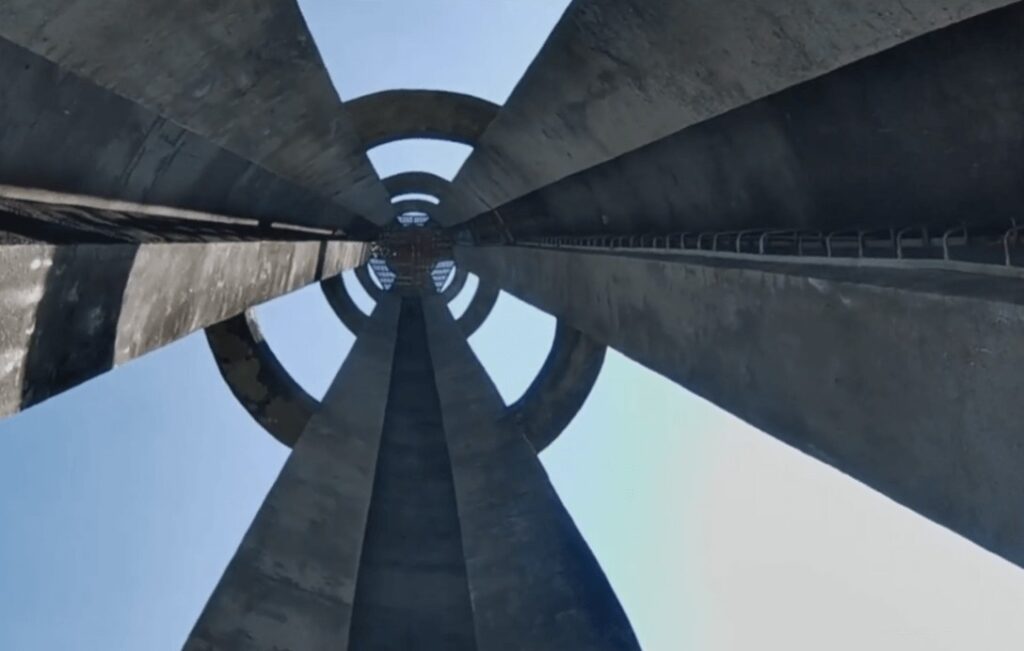
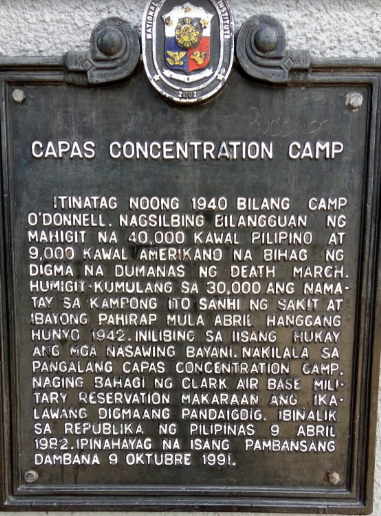
Without a doubt, the shrine is a moving tribute to all fallen heroes who fought in World War 2. Then I went inside the obelisk and I found out that the obelisk tower consists of three corded sections symbolizing the friendship between the three countries (the Philippines, the United States, and Japan) in this modern age of global peace, who have learned the lessons of war from the past. Afterward, I can see the historical marker which notify the visitors about the history of the shrine.
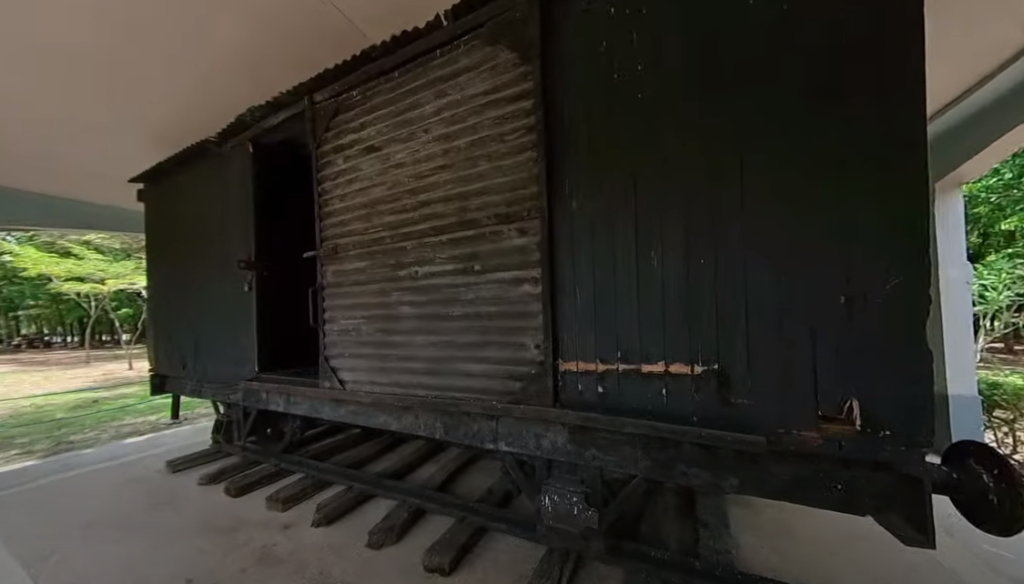
Later I went on the relic of one of the boxcars found inside the Capas National Shrine and I read the testimonials of Survivors of the Bataan Death March boxcars. “We marched to the San Fernando station where we were herded into crowded boxcars like cattle getting ready for the slaughterhouse. Each boxcar could accommodate about 50 prisoners. There must have been about 100 in our boxcar. The Japanese were loading up to 150 men into other boxcars. We heard the Prisoners of War (POW) screaming. It took another three hours for the train to reach Capas, a distance of about thirty miles. I was seized by an understandable attack of galloping claustrophobia, the other men were fighting and struggling to keep a foothold and stand upright. By the time the train left the San Fernando station, the platform of the boxcar was a sea of filth from dysentery patients. By the time we got to Capas, the boxcar was full of it and we had been standing in it for four hours. Three men in my boxcar suffocated. One fellow in Joe Wongronowitz’s car didn’t make it. In a matter of minutes, we were suffocating for lack of air. We were being cooked alive in a 110-degree oven. We sweated, sizzled, urinated, defecated. I could hear some screaming and when I looked back I saw a few who were fainting but had not an inch to fall on. I don’t know how many of my comrades died in that car, there must have been at least 10. As the line of cars pulled in and doors opened in Capas, I could see many, many more bodies already laid out on the ground beside the tracks”. At this point, I was emotional already and I gained a deeper respect and sadness for them.
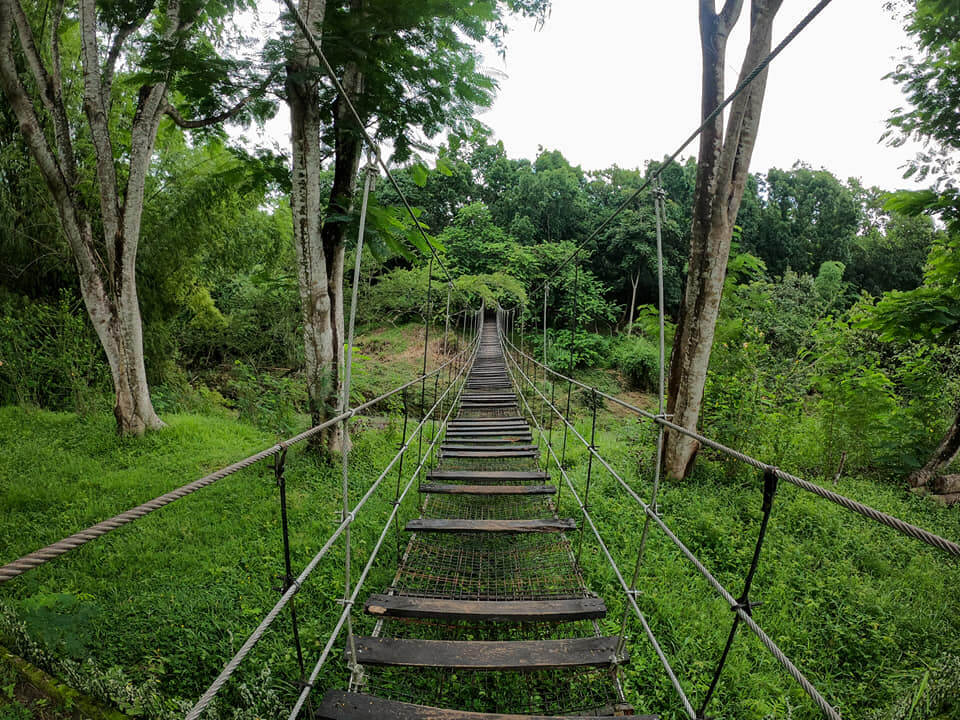
Later I visited the hanging bridge over the river which provided water to the prisoners in Camp O’Donnell. I found out that it took more than half a century for the Defenders of Bataan and Corregidor to remember the role played by the O’Donnell River in the survival of the Prisoners of War in Capas. The historic river was the only source of water that sustained them during five months of incarceration. In grateful recognition and tribute to the O’Donnell River, this bridge of remembrance was built on April 1, 2001 by the Defenders of Bataan and Corregidor, inaugurated and blessed on May 26, 2001.
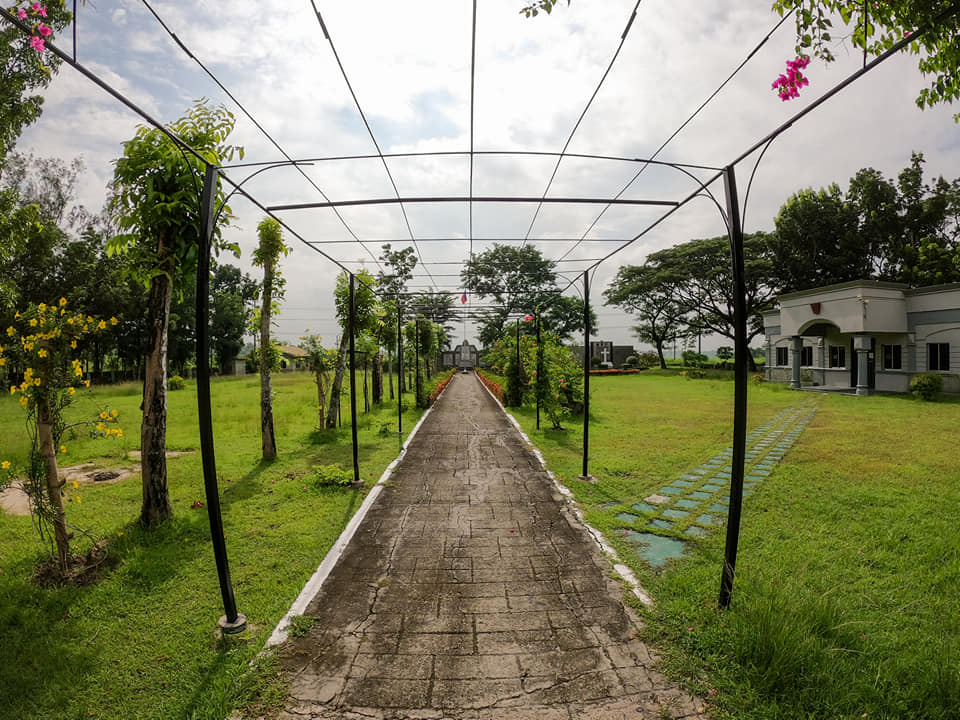
Then as I continue my walk, I see a memorial dedicated to all those civilians of the provinces of Bataan, Pampanga, and Tarlac. It commemorates the many men, women, and even children for their many acts of courage and compassion displayed toward the exhausted and desolate Filipino-American prisoners of war during their march of death to Camp O’Donnell in Capas Tarlac that occurred in April 1942. Lining the sides of the route taken by the long columns of shuffling captive soldiers closely guarded by brutal imperial Japanese army guards, these unsung heroes at great risk to their lives did with great watchfulness whatever they could to lessen the sufferings of the prisoners of war by passing on to them food and water. In some instances, they even managed to pull some of them out of the line to freedom.
Our country is definitely proud of them and they have not been forgotten nor shall they ever be forgotten. I spent about an hour in the historical Capas National Shrine and I can say it is worth the time to walk around and read all the historical information. I want to thank the people who maintained this place as a great reminder of our history. Also kudos to the people who believed and fought for our freedom. Lastly, I want to impart this quote from President Manuel Roxas on November 30, 1946 “These men were the flowers of our youth. They typified the courage and loyalty of our race. We can never forget them. We will never forget them. Their heroic sacrifice set a measure of fidelity to our flag and our institutions for this and future generations”.
Reminders and Tips:
- The entrance fee at Capas National Shrine is 20 pesos per head for local tourists and 40 pesos per head for foreigners.
- Capas National Shrine is open daily from 8 am in the morning up to 5 pm in the afternoon.
- Always maintain the solemnity and serenity of the shrine. No shouting within 100 meters from the Obelisk and no playing of music within the Heroes Wall. Also, bicycles are not allowed inside the Heroes Wall and Esplanade.
- Vandalism and littering are strictly prohibited. Also climbing the obelisk is not allowed.
- No practice driving at the shrine and drinking any alcoholic beverages is not allowed.
- The use of camera drones is allowed and there’s no need for a permit or paying a certain fee.
- Pictures and videos must be taken with utmost respect to all monuments and markers.
- During the summer season bring an umbrella because the shrine is an open area.
- Last but not least, vehicles can only park in designated parking spaces. The parking fee for a small vehicle is 40 pesos.
There you have it, history lover. Yesterday is history, tomorrow is a mystery but today is a gift. On the whole, I hope that this blog has been commendable to you.



